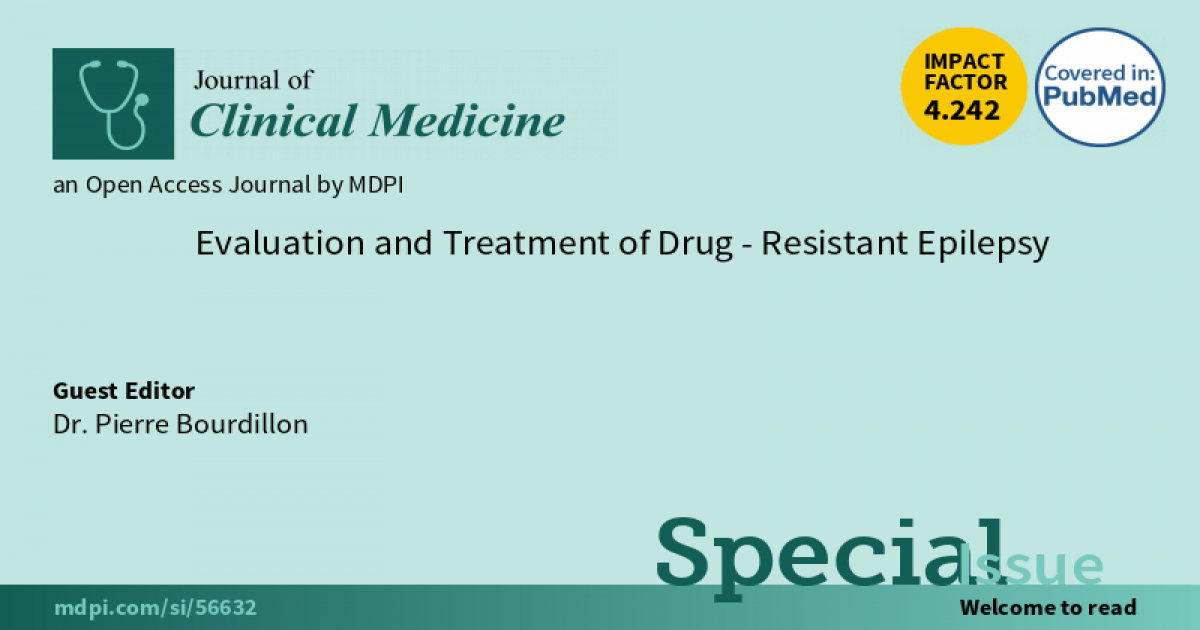Evaluation and Treatment of Drug-Resistant Epilepsy
A special issue of Journal of Clinical Medicine (ISSN 2077-0383). This special issue belongs to the section "Clinical Neurology".
Deadline for manuscript submissions: closed (1 June 2021) | Viewed by 6114

Special Issue Editor
2. Paris Brain Institute, Sorbonne Université, Pitié-Salpêtrière Hospital 47 boulevard de l'hôpital, 75013 Paris, France
Interests: epilepsy surgery; epileptic network; intracranial EEG; neuro-modulation; stereotactic lesioning
Special Issue Information
Dear Colleagues,
Drug resistant epilepsy management remains challenging despite numerous innovations.Focal epilepsies are eligible to a surgical treatment consisting in a resection, a lesion or a disconnection of the ictal onset zone. Identification of the ictal onset zone and the functional connectome, through non-invasive (MRI, EEG, MEG, PET-scan) and invasive (intracranial-EEG) investigations, remains crucial to propose a surgical treatment with a favorable epilepto-functional balance. Novel approaches of interpretation of these investigations (new signal analysis approaches, artificial intelligence, new electode) and multimodal integration of this data lead to recent improvements in this field. Alongside this improvement, new surgical techniques, such as stereotactic lesioning (laser interstitial thermal therapy, thermo-coagulation, radiosurgery, disconnection (robotized disconnection) or awake condition surgery, have recently been described aiming to reduce the risk of the procedures. The first goal of this special issue is to provide both synthesis and original researches of this field.
More recently, strategies aiming to treat patients having drug resistant epilepsy ineligible to curative surgery (large epileptic network, ictal onset zone located in non-compensable zone of the functional connectome) have been evaluated. Schematically, two trends are currently developed. One the one hand, targeting the epileptic network instead of focusing on the ictal onset zone (lesion of network node, neuro-modulation through deep brain stimulation). On the other hand, trying to make the seizure less disabling instead of trying to cure the seizure (close loop system aiming to prevent the loss of consciousness during the seizure). The second goal of this special issue is to provide insight on these innovative strategies.
We invite researchers from different fields, including clinical neurology, neurophysiology, neurosciences, neurosurgery and engineering, to submit their original work or reviews to this Special Issue.
Dr. Pierre Bourdillon
Guest Editor
Manuscript Submission Information
Manuscripts should be submitted online at www.mdpi.com by registering and logging in to this website. Once you are registered, click here to go to the submission form. Manuscripts can be submitted until the deadline. All submissions that pass pre-check are peer-reviewed. Accepted papers will be published continuously in the journal (as soon as accepted) and will be listed together on the special issue website. Research articles, review articles as well as short communications are invited. For planned papers, a title and short abstract (about 100 words) can be sent to the Editorial Office for announcement on this website.
Submitted manuscripts should not have been published previously, nor be under consideration for publication elsewhere (except conference proceedings papers). All manuscripts are thoroughly refereed through a single-blind peer-review process. A guide for authors and other relevant information for submission of manuscripts is available on the Instructions for Authors page. Journal of Clinical Medicine is an international peer-reviewed open access semimonthly journal published by MDPI.
Please visit the Instructions for Authors page before submitting a manuscript. The Article Processing Charge (APC) for publication in this open access journal is 2600 CHF (Swiss Francs). Submitted papers should be well formatted and use good English. Authors may use MDPI's English editing service prior to publication or during author revisions.
Keywords
- Epileptic networks
- Pre-surgical evaluation
- Intra-cranial-EEG
- Network nodes
- Neuro-modulation
- Stereotactic lesioning
- Epilepsy surgery
- Drug-resistant epilepsy
- Closed-loop
- Electrophysiology
Benefits of Publishing in a Special Issue
- Ease of navigation: Grouping papers by topic helps scholars navigate broad scope journals more efficiently.
- Greater discoverability: Special Issues support the reach and impact of scientific research. Articles in Special Issues are more discoverable and cited more frequently.
- Expansion of research network: Special Issues facilitate connections among authors, fostering scientific collaborations.
- External promotion: Articles in Special Issues are often promoted through the journal's social media, increasing their visibility.
- e-Book format: Special Issues with more than 10 articles can be published as dedicated e-books, ensuring wide and rapid dissemination.
Further information on MDPI's Special Issue policies can be found here.






